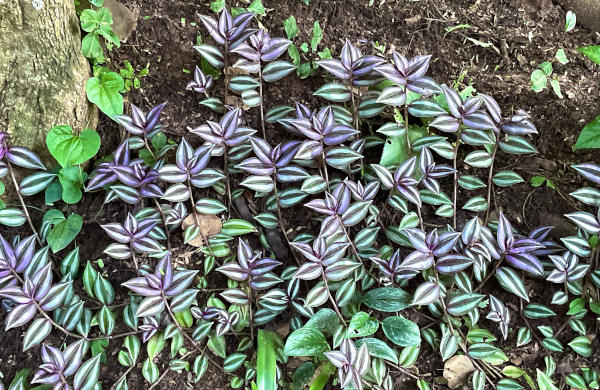How to grow Tradescantia
Originating from woodland, scrub, and disturbed ground throughout North, Central, and South America, tradescantia is an evergreen or semi-evergreen perennial. It is grown for its attractive, strappy foliage and distinctive three-petalled flowers. Though each of these only lasts for a day, they are produced continuously for many months. An easy-going nature (it is tolerant of a wide range of conditions), combined with the impressively long flowering period make tradescantia a popular choice among gardeners.
Of approximately 65 different species, some are tender and typically grown as houseplants, while others are hardy and best suited to outside. All of those currently offered by Hayloft are of the hardy variety.
Tradescantia is also known by the common name ‘spiderwort’. This is a nod to the liquid which oozes from cut stems then dries into thin, web-like threads.
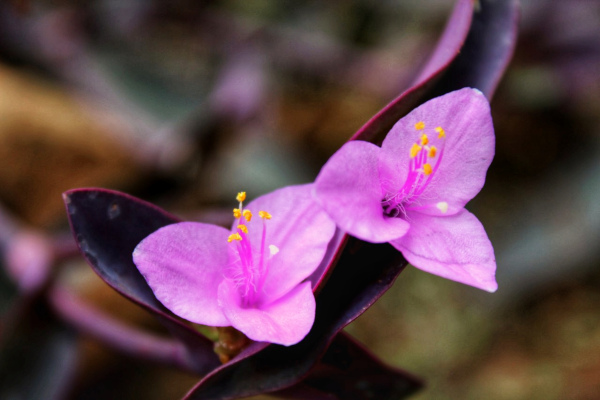
Zantedeschia is a genus of flowering plants from the family Araceae and is native to southern Africa. With a rich history dating back to the Ancient Romans, these deciduous or semi-evergreen perennials have been used as a symbol of celebration. Zantedeschia was Named after Professor Giovanni Zantedeschia, an Italian botanist.
There are two main forms of Zantedeschia: hardy and tender. Hardy forms of the plant can be grown outdoors, enjoy moist soil and full sun or partially shaded conditions - these are known as Arum lilies. Tender forms of Zantedeschia prefer being grown in containers or pots and should be brought inside over the winter - these are known as Calla lilies.
With tuberous flora in all colours from whites, yellows and oranges to deep reds and purples, Zantedeschias are not to be overlooked in any garden, as long as they have sufficient sunlight to grow in.
Ready to learn more about growing Zantedeschia? Read on for all there is to know...

Key Information
Soil pH
Position
Hardiness

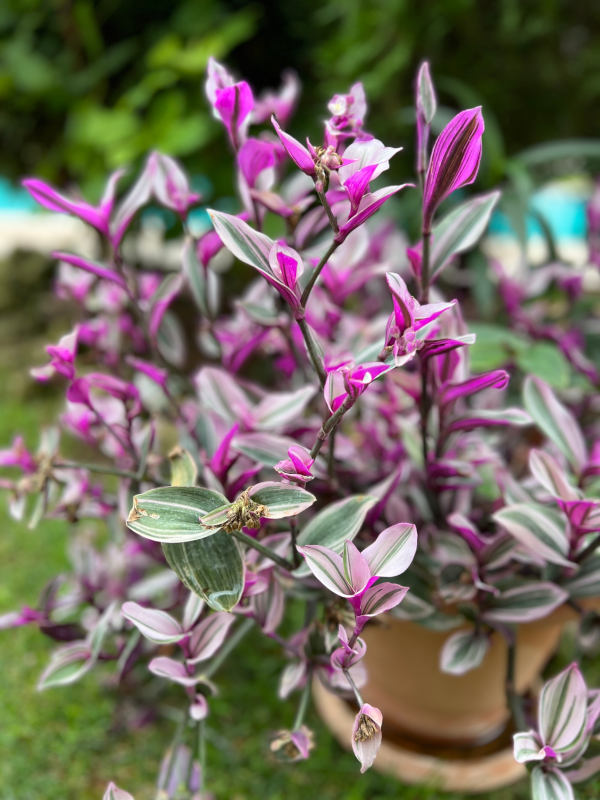
Where & when to plant Tradescantia
Position - Full sun to part shade
Soil - Preferably moist and well-drained, though will tolerate both drier and wetter spots.
Flowering Period - Early summer to autumn
Hardiness - Varies depending on the species
For best results, plant in autumn or spring. An autumn planting can be done by those gardening in mild conditions (and broadly speaking, this is the southern half of the UK). For those liable to cold winters, it is best to wait until spring (generally the northern half of the UK). Planting can also be carried out in summer, though be prepared to water regularly.
Tradescantia provides useful groundcover and long-lasting colour to a range of situations. The ideal is a moist, partially shaded border or woodland garden. Though full sun will be tolerated (if the soil doesn’t dry out), as will dry shade. A clump-forming habit lends it well to border or path edging, as well as containers.
How to plant Tradescantia
In the ground
- Clear the chosen area of weeds.
- Dig a planting hole several times larger than the root ball, mixing in plenty of well-rotted organic matter. If your soil is on the heavy side, add a handful or two of horticultural grit.
- Place the plant in the hole, ensuring the top of the root ball sits level with the surface of the soil. Too low and the plant may rot, too high and the roots can dry out.
- Backfill with soil and firm in gently.
- Soak well with water.
- Mulch around the base with well-rotted organic matter.
In a container
- Choose an appropriate container, ensuring there are plenty of drainage holes.
- It can be worth potting up large containers in situ to save yourself the trouble of moving once full.
- Use a good quality potting compost with a little horticultural grit mixed in, and, if not already present in the compost (check the description on the bag) some slow-release plant food.
- Start by partially filling the pot with compost; enough so that when placed on it the upper surface of the root ball is about 3cm lower than the top of the pot.
- Infill all the space surrounding the root ball with compost, firming down with your fingers then adding a little more so the plant is held tight.
- Pick up the pot (if you can!) and lightly tap on the potting bench or ground a few times to help further settle the compost around the plant.
- Soak well with water.
- A mulch with horticultural grit will look attractive and help to prevent a ‘cap’ or crust forming on the top of the compost (something container plants can suffer due to the artificial nature of their watering).
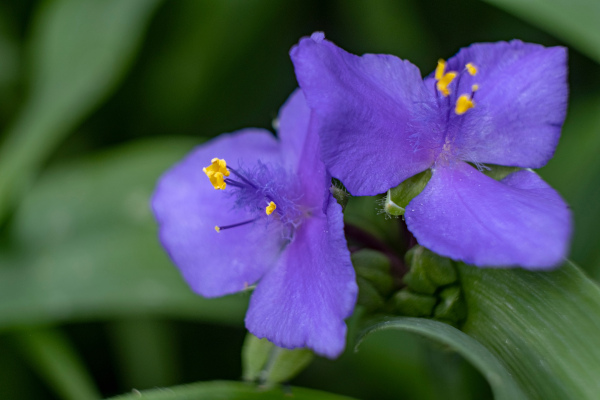
What to plant with Tradescantia
Quietly flowering its socks off throughout summer and into autumn, tradescantia makes a particularly good ‘filler’ plant for busy borders. Pop one into any hole in your planting and you will be amazed at the difference! Combine with other exceptionally long bloomers for a low effort floral bonanza. Think geranium, erigeron, geum, scabious, erysimum, and penstemon.
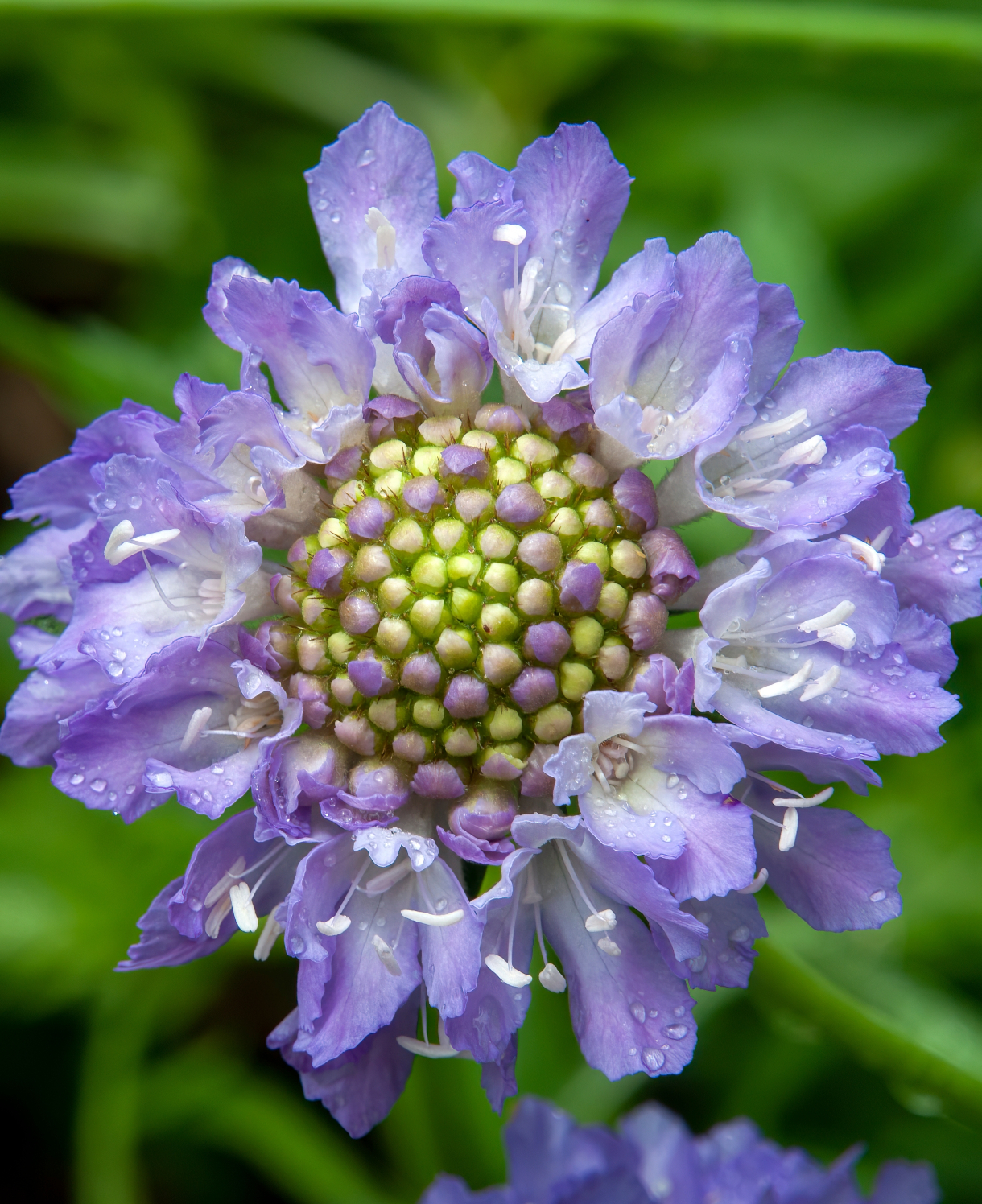
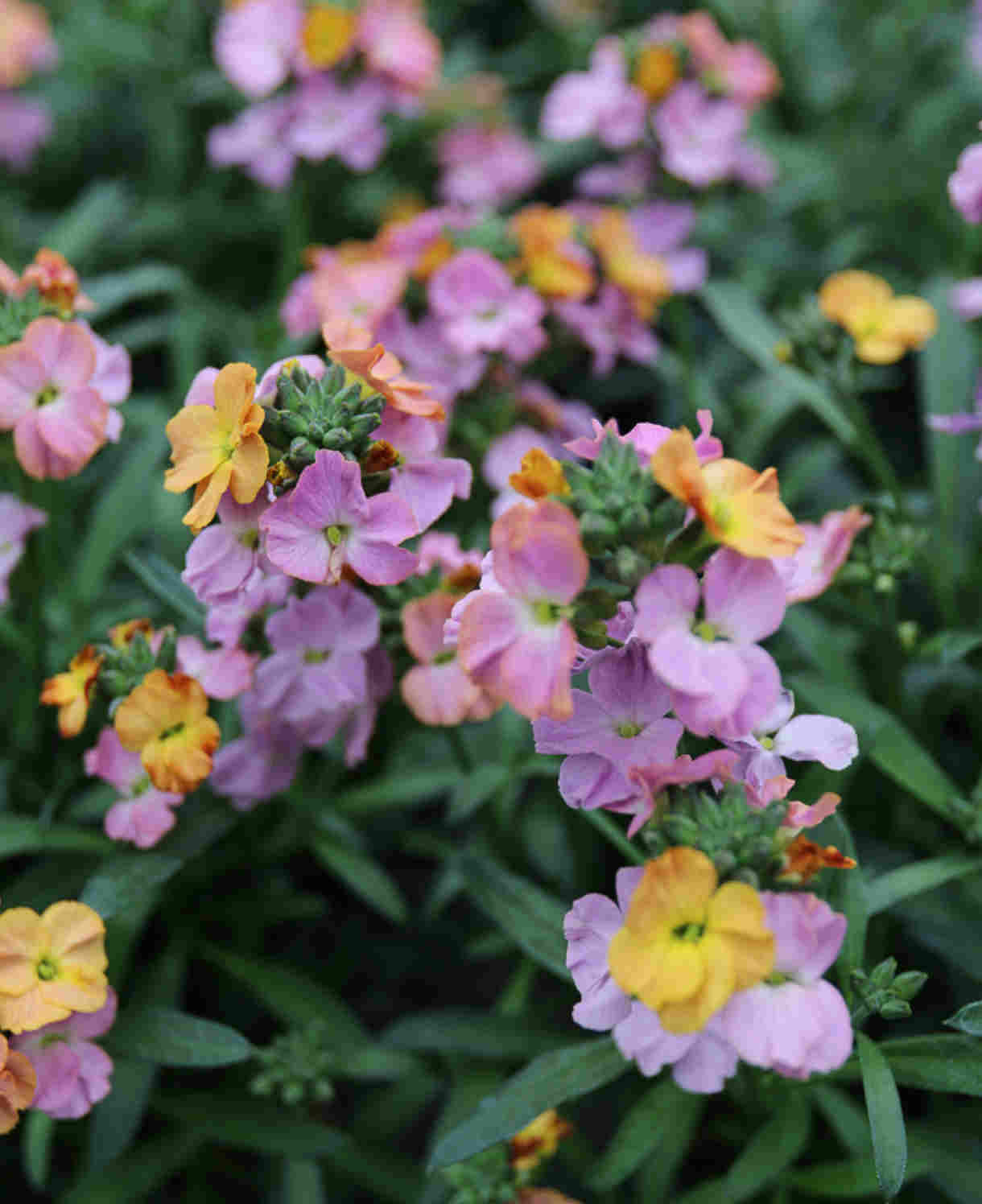
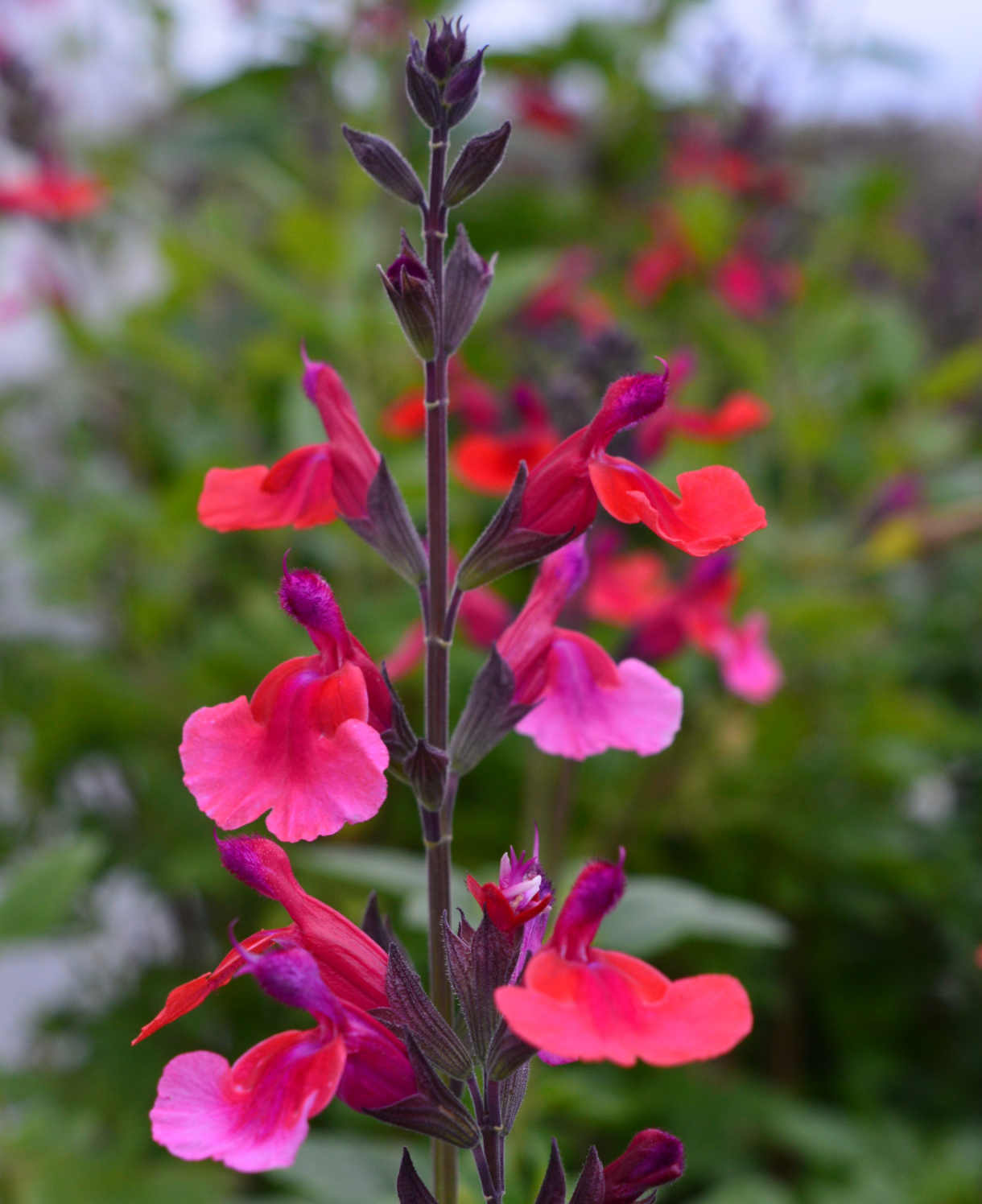
How to care for Tradescantia
Pruning and Deadheading
Remove spent flower stalks to prevent seeding and encourage further flowers.
Tradescantia can look a little ragged after flowering, which can be avoided by some (rather brave) midseason pruning. Either shear back by a third, or remove older leaves leaving only new growth. Your boldness will be rewarded with a second flush of flowers and a tidier plant for the rest of the season.
Watering
Keep well-watered until established, and then in very dry periods thereafter.
Container-grown tradescantia will require regular watering throughout the growing season.
Cold Protection
All our tradescantia is fully hardy and should overwinter easily in the UK without the need for added protection.
Pests and Diseases
Tradescantia tends to be largely pest and disease free, though you may find slugs and snails develop a taste for its leaves, particularly when newly planted. Encouraging natural predators into your garden, such as birds, frogs, toads, and hedgehogs, will make a big difference. Torchlight searches after dark (when slugs and snails are at their most active) are also effective, allowing you to collect the offending molluscs in a bucket. Place on the compost heap, or in a part of the garden containing less vulnerable plants.
Like most plants, once tradescantia is well established it tends to be better able to tolerate the actions of slugs and snails without the need for intervention.
How to propagate Tradescantia
Tradescantia is best propagated by lifting and dividing existing plants. Not only does this provide new plants, but it also breathes new life and vigour into existing clumps. Division can be done in spring or autumn.
- Choose a day when the soil is not frozen or waterlogged.
- Dig the plant out of the ground.
- Shake off any excess soil.
- Separate the plant into sections using either swift, cutting blows with a sharp spade, or two forks inserted back-to-back with tines touching, handles then pushed together to prise the plant apart.
- Discard old, damaged, or surplus pieces, keeping healthy, vigorous material.
- Replant decent-sized pieces where desired, and any smaller bits can be potted up.
- Water well until fully established.
Common Tradescantia questions
Is tradescantia poisonous?
Tradescantia is mildly toxic to cats and dogs and may irritate the skin of humans if they come into contact with the foliage.
